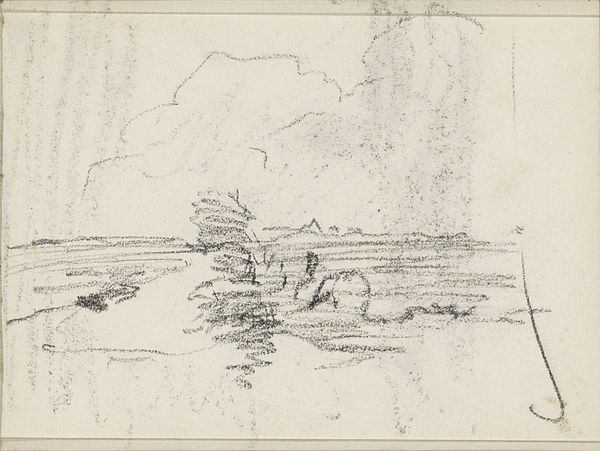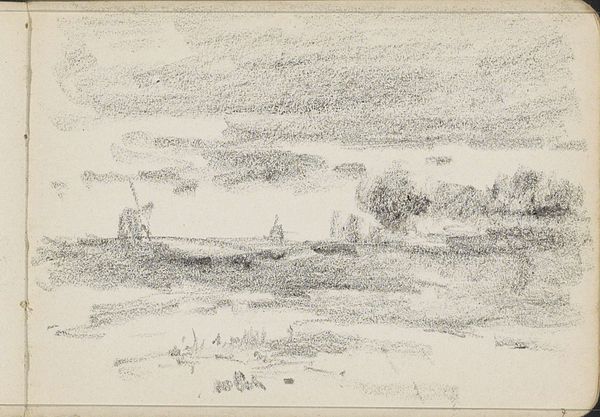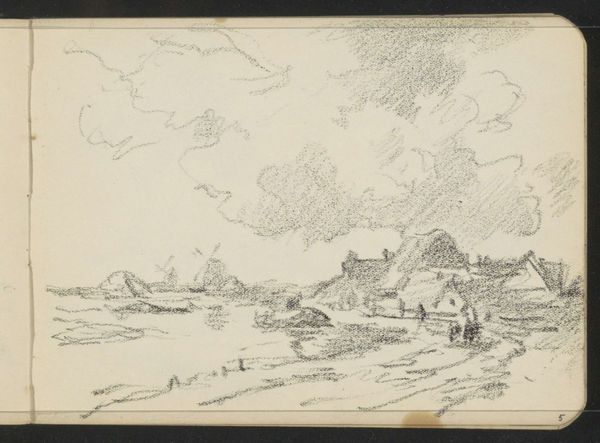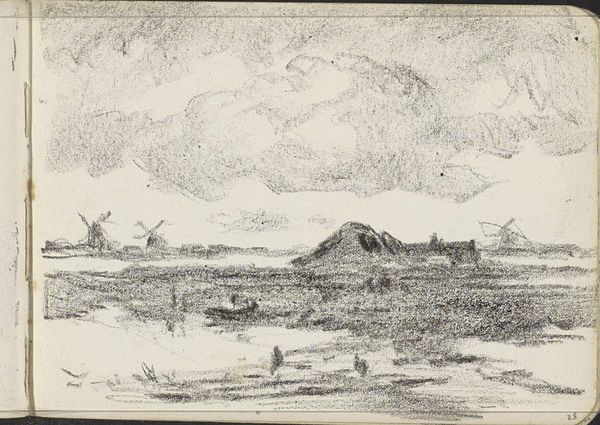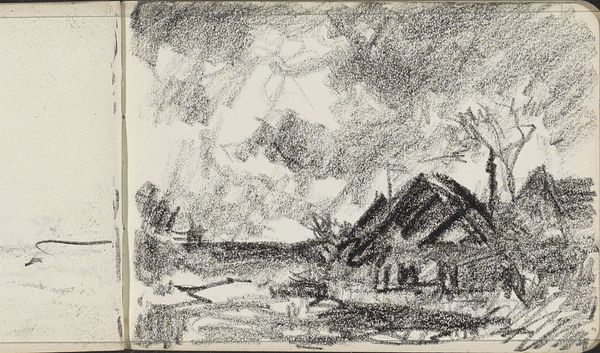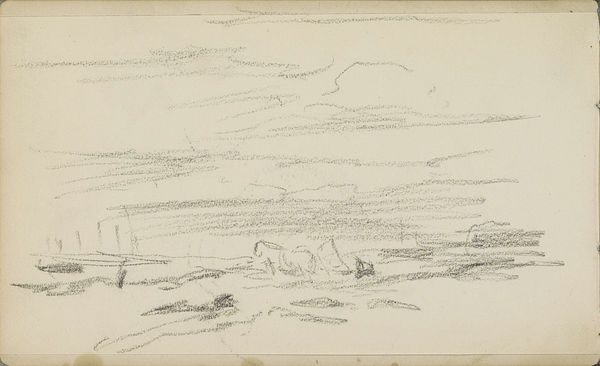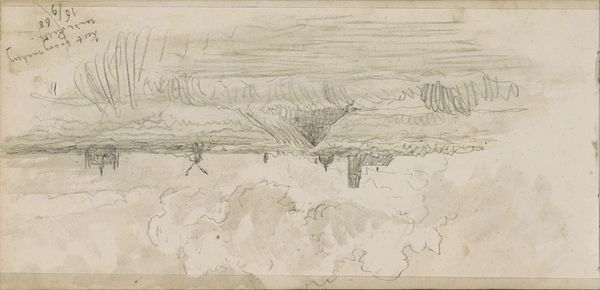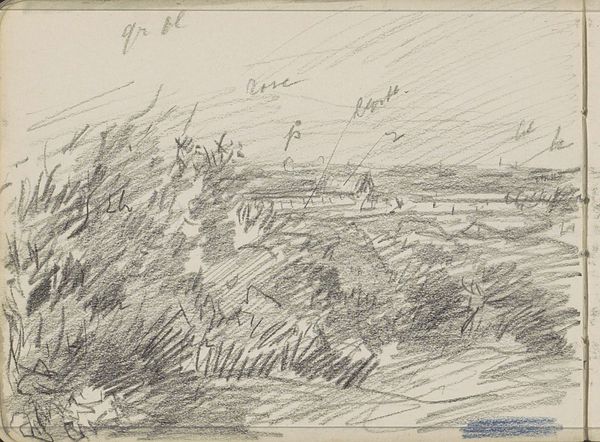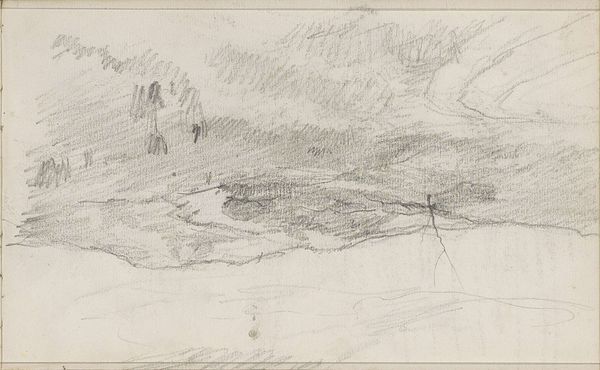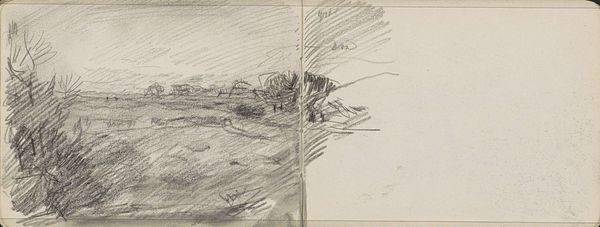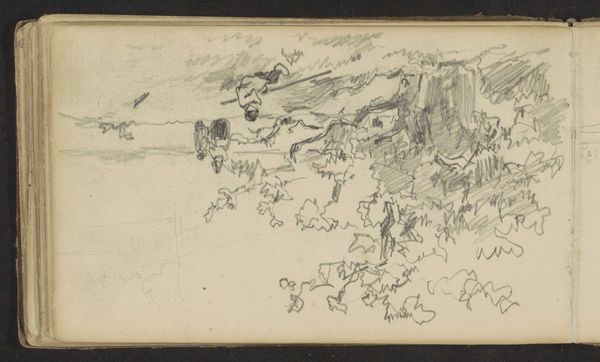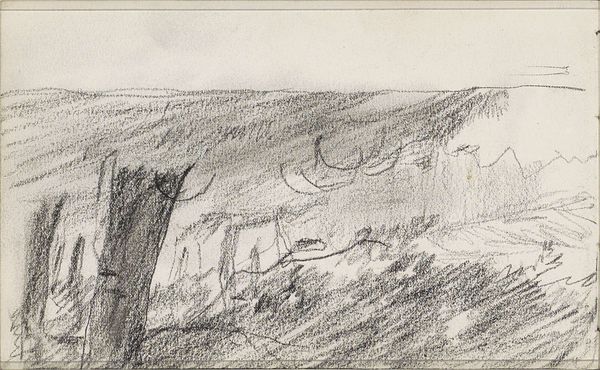
drawing, pencil, graphite
#
drawing
#
dutch-golden-age
#
landscape
#
pencil
#
graphite
Copyright: Rijks Museum: Open Domain
Curator: This drawing, likely executed between 1866 and 1922, is called "River Landscape with Mills," made with graphite and pencil by Willem Cornelis Rip. Editor: It’s a simple, yet powerful sketch. I immediately see a scene of bucolic industry and natural serenity. Curator: Windmills are potent symbols within Dutch art history, representing prosperity and control over the landscape— a clear articulation of cultural identity during a period defined by complex socio-political shifts in land usage, resources, and societal stratification. This sketch carries that history. Editor: Absolutely, the windmills, seen here on the horizon line, speak to Dutch innovation. Rip clearly seeks to capture the emotional essence of the place, too. I think of mills also in their representation of continuous, cyclical change… Curator: Indeed, their repeated depiction suggests an awareness of human impact, both positive and potentially disruptive to the ecology. Editor: Note the clouds— loosely sketched. Are they there just to show an overcast sky, or is it representative of coming storms, of socio-economic tension reflected in art? What would that horizon line have meant to various demographics at the time? The rapid pencil strokes add dynamism. Curator: By positioning the viewer in the landscape, Rip might subtly implicate us in this narrative. He gives agency, makes you question who owns this history? Editor: Exactly! The medium here becomes part of the message—a humble, quickly rendered sketch, suggesting accessibility, even while probing complex issues. Curator: Through the symbolism of the windmills and that almost frenetic handling of the pencil, Willem Cornelis Rip invites us to reflect on the historical construction of landscape, not as a purely aesthetic experience but as a locus of labor, power, and representation. Editor: Well said! It truly is fascinating how a simple sketch on paper can ignite a broader understanding of human influence on the environment, both past and present.
Comments
No comments
Be the first to comment and join the conversation on the ultimate creative platform.
